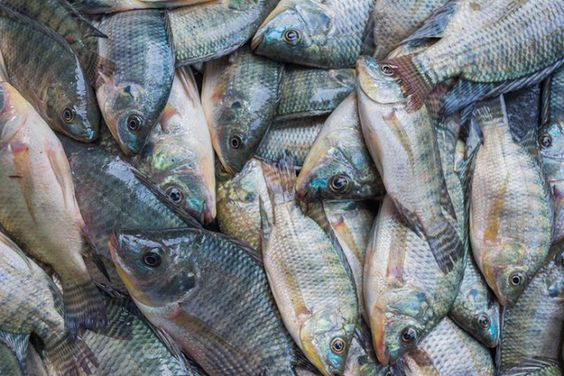Cracking the Code: The Journey of Crabs in the Processing Industry
Crabs in the Processing Industry, those fascinating crustaceans with their scuttling gait and delicious meat, are a significant player in the global seafood industry. But their journey from seabed to succulent dish on your plate involves a complex process: crab processing. Let’s delve into the world of crab processing, exploring the steps involved, the challenges encountered, and the future of this vital sector.
Contents
The Processing Journey: From Catch to Consumption
The crab processing journey can be broken down into several key stages:
-
Harvesting Crabs in the Processing Industry: Crabs are caught using various methods, depending on the species and location. Traps, pots, and trotlines are common tools, with regulations in place to ensure sustainable fishing practices.
-
Transportation Crabs in the Processing Industry: Once caught, live crabs are quickly transported to processing facilities in refrigerated containers or holding tanks. Maintaining live crabs minimizes meat spoilage and ensures optimal quality.
-
Processing: Here’s where the magic (or perhaps not magic for the crabs) happens:
- Stunning or Killing Crabs in the Processing Industry: Crabs are typically stunned or killed humanely before processing. Methods include drowning in chilled water, spiking the nerve center, or using electrical stunning.
- Cooking Crabs in the Processing Industry: Crabs are cooked quickly and thoroughly, often in large steam cookers or boiling vats. The exact temperature and cooking time depend on the crab species and desired end product.
- Cooling: After cooking, crabs are rapidly cooled to prevent spoilage. This might involve using chilled water baths or blast freezers.
- Shelling and Picking: Skilled workers, often called “pickers,” meticulously remove the meat from the shells. This can be done by hand or with specialized machinery, depending on the processing plant and crab variety. Different grades of meat are separated based on color, texture, and location within the shell.
- Cleaning and Washing: The extracted crabmeat undergoes thorough cleaning and washing to remove any shell fragments or impurities.
- Packaging: The final stage involves packaging the crabmeat in various formats, depending on the intended market. Options include cans, pouches, fresh containers, or frozen blocks.
-
Distribution: Packaged crabmeat is then distributed to wholesalers, retailers, restaurants, or directly to consumers.
The Importance of Processing: Quality and Efficiency
The crab processing industry plays a crucial role in ensuring the quality and safety of crab meat for consumers. It involves stringent sanitation protocols, temperature control throughout the process, and quality checks to maintain hygiene and prevent contamination. Processing also adds efficiency by:
- Standardization: Processing allows for consistent product quality and presentation, meeting consumer expectations.
- Value Addition: Processors can create different crabmeat products like lump crab (large pieces), claw meat, or specialty mixes, catering to diverse culinary preferences.
- Increased Shelf Life: Through proper processing techniques like pasteurization or freezing, crabmeat can have a longer shelf life, extending its availability geographically.
Challenges and Considerations
Crabs in the Processing Industry Despite its importance, the crab processing industry faces several challenges:
- Sustainability: Ensuring sustainable crab fishing practices is crucial to maintain healthy populations and protect the ecosystem. Regulations and responsible management are essential.
- Labor: Processing crabmeat can be labor-intensive, particularly the picking stage. Finding and retaining skilled workers can be a challenge, especially in developed countries with higher labor costs.
- Animal Welfare: Concerns exist regarding the humane treatment of crabs during harvesting and processing. Implementing ethical practices like proper stunning methods and minimizing handling time are essential.
- Food Safety: Maintaining strict hygiene standards and proper handling throughout the processing chain is critical to prevent the spread of foodborne illnesses.
The Future of Crab Processing: Innovation and Sustainability
The crab processing industry is constantly evolving. Here are some trends shaping its future:
- Automation: Technological advancements like automated picking machines and vision systems are likely to play a bigger role, addressing labor shortages and increasing efficiency.
- Value-Added Products: Processors are exploring new value-added products like seasoned crabmeat, crab dips, or ready-to-eat crab meals, catering to convenience-driven consumers.
- Sustainable Practices: Emphasis on sustainable fishing methods, traceability of crab origin, and responsible waste management are becoming increasingly important for processors to meet consumer demands and environmental concerns.
Conclusion Crabs in the Processing Industry
Crabs in the Processing Industry is a complex yet vital industry, transforming live crabs into a delicious and versatile seafood product. By addressing sustainability concerns, implementing ethical practices, and embracing innovation, the crab processing industry can continue to provide high-quality crabmeat for consumers worldwide while ensuring the health of crab populations and our oceans.






